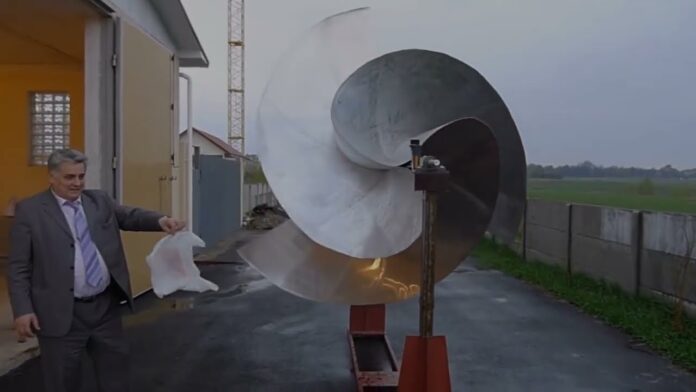Climate change is a pressing issue faced by our planet today, and it has significant effects on all living beings. One of the major consequences of climate change is its impact on wildlife and their habitats. The loss of biodiversity and destruction of wildlife habitats is a growing concern for scientists, conservationists, and environmentalists. With increasing temperatures, rising sea levels, and extreme weather events, the natural balance is being disrupted, leading to a decline in various species of plants and animals.
This article aims to explore the causes of climate change, its effects on wildlife, and the efforts being made to conserve and protect them. Through case studies and scientific evidence, we will delve into the severity of the situation and understand the urgency of taking action to mitigate the adverse effects of climate change on our wildlife.
Causes of Climate Change
Climate change is caused by human activities that emit greenhouse gases (GHGs) into the atmosphere. These gases trap heat from the sun, causing the Earth’s temperature to rise, resulting in changes in weather patterns and other climatic conditions. The main sources of these emissions are the burning of fossil fuels and deforestation.
Burning of Fossil Fuels
Fossil fuels such as coal, oil, and gas are burned to produce energy that powers our daily lives. This burning releases carbon dioxide (CO2) in large quantities into the atmosphere, contributing to the greenhouse effect. According to a report by the Intergovernmental Panel on Climate Change (IPCC), the concentration of CO2 in the atmosphere has increased by 47% since pre-industrial times.
Besides CO2, the burning of fossil fuels also releases other GHGs such as methane and nitrous oxide, further contributing to the warming of the planet. Methane, in particular, is a potent greenhouse gas, with a global warming potential 28 times that of CO2 over a 100-year time frame.
Deforestation
Deforestation is the process of clearing forests for agriculture, urbanization, or other land uses. Trees play a crucial role in regulating the Earth’s climate by absorbing and storing carbon from the atmosphere through photosynthesis. However, when deforestation occurs, these trees are cut down, releasing the carbon they have stored back into the atmosphere as CO2. Deforestation accounts for around 15% of global greenhouse gas emissions, making it one of the major contributors to climate change.
Apart from these two main causes, other human activities such as industrial processes, transportation, and agriculture also contribute to the emission of GHGs, leading to the warming of the planet.
Effects of Climate Change on Wildlife

The Earth’s climate has always been changing, but the current rate of change is unprecedented, and it is having adverse effects on wildlife and their habitats. The following are some of the impacts of climate change that are affecting various species of plants and animals.
Habitat Loss and Fragmentation
Climate change alters the natural habitats of wildlife, making them less suitable for survival. As temperatures rise, certain areas become unsuitable for certain species, forcing them to migrate to more suitable regions. This results in habitat loss and fragmentation, where large areas of habitat are broken up into smaller, isolated patches. This makes it difficult for species to move freely and leads to the loss of genetic diversity within populations.
For example, polar bears rely on sea ice for hunting and breeding, but with melting Arctic ice due to rising temperatures, they are forced to swim longer distances to reach prey, leading to exhaustion and even death. Similarly, coral reefs, which are home to thousands of marine species, are dying due to ocean acidification caused by higher levels of atmospheric CO2.
Changes in Phenology and Distribution
Phenology refers to the timing of biological events, such as flowering, breeding, and migration, in response to seasonal changes. Climate change affects these patterns, causing shifts in phenology and disrupting the natural balance of ecosystems. For instance, earlier springs due to warmer temperatures can lead to plants blooming before pollinators are active, resulting in a mismatch between flowering and pollination.
Also, as certain areas become unsuitable for species, they may be forced to move to other regions, altering their distribution. This can have cascading effects on food webs and cause competition for resources among different species.
Increased Risk of Extinction
With habitat loss, changes in phenology, and distribution, many species are facing an increased risk of extinction. According to a study published in Nature Climate Change, climate change could drive up to one-sixth of all species on Earth to extinction by the end of the century if urgent action is not taken to reduce GHG emissions.
Species that are already endangered or have small population sizes are particularly vulnerable to the impacts of climate change. For example, the Adelie penguin, which depends on sea ice for its survival, has seen a decline in population due to drastic reductions in Antarctic sea ice cover.
Case Studies

Several case studies have been conducted to understand the impact of climate change on wildlife and provide evidence for its severity. These studies highlight the need for immediate action to mitigate the effects of climate change on our planet’s biodiversity.
Polar Bears in the Arctic
The Arctic is experiencing some of the most rapid changes due to climate change, and polar bears are bearing the brunt of it. Studies have shown that polar bear populations in the Arctic have decreased by 40% over the past decade, and this decline is projected to continue.
The primary reason for this decline is the loss of sea ice, which polar bears rely on for hunting, breeding, and traveling. As the sea ice melts earlier and forms later each year, polar bears are forced to spend more time on land, where they have limited access to food. This has led to instances of starvation and reduced body size among polar bears, affecting their reproductive success and overall survival.
Great Barrier Reef in Australia
The Great Barrier Reef, the largest coral reef system in the world, is a UNESCO World Heritage Site and home to thousands of marine species. However, it has been severely impacted by climate change, particularly through ocean warming and acidification.
Rising sea temperatures have caused mass bleaching events, where corals expel algae living within their tissues, turning them white. If the stressors persist, the coral eventually dies. According to a study published in Nature, the frequency of severe bleaching events on the Great Barrier Reef has increased fivefold since the 1980s, with back-to-back bleaching events occurring in 2016 and 2017, leading to widespread coral mortality.
Golden Toads in Costa Rica
The golden toad was a brightly colored amphibian found only in a small region of Costa Rica’s cloud forests. However, due to climate change, its habitat began to dry out, making it unsuitable for the toads to breed. Between 1987 and 1989, there were no sightings of the golden toad, and it was declared extinct in 2004.
This case study highlights the vulnerability of species with small ranges and specialized habitats to even small changes in climate.
Conservation Efforts
The effects of climate change on wildlife are alarming, and urgent action is required to mitigate these impacts. Governments, conservation organizations, and individuals are taking steps to reduce GHG emissions and conserve and protect wildlife and their habitats.
Reduction of Greenhouse Gas Emissions
One of the key ways to mitigate the effects of climate change on wildlife is by reducing GHG emissions. Governments around the world are setting targets to reduce their carbon footprint and transitioning to cleaner energy sources such as wind and solar power. The Paris Agreement, signed by 195 countries in 2015, aims to limit the global temperature rise to well below 2 degrees Celsius above pre-industrial levels.
Individuals can also contribute by reducing their carbon footprint through actions such as using public transportation, conserving energy at home, and supporting companies that have sustainable practices.
Habitat Conservation and Restoration
Conserving and restoring habitats is crucial for the survival of many species affected by climate change. Protected areas, such as national parks and wildlife reserves, provide safe havens for wildlife and help maintain biodiversity. Governments and conservation organizations are increasing efforts to expand protected areas and improve their management to ensure the survival of species.
Habitat restoration projects, such as reforestation and wetland restoration, are also being implemented to create suitable habitats for wildlife. These projects not only aid in mitigating the effects of climate change but also provide ecological benefits such as carbon sequestration and flood control.
Species Protection and Management
Species-specific conservation efforts are also being carried out to protect and manage populations of vulnerable species. For example, conservationists are working towards protecting polar bears by reducing human-bear conflicts and monitoring populations.
In addition, captive breeding and reintroduction programs are being conducted to increase the population sizes of endangered species. This has been successful in saving species such as the black-footed ferret, which was once declared extinct in the wild but has now been reintroduced into its natural habitat.
Conclusion
Climate change is a global crisis that demands immediate action to reduce its impact on wildlife and their habitats. With rising temperatures, changes in weather patterns, and sea level rise, many species are facing an increased risk of extinction. It is our responsibility to take collective action to reduce GHG emissions, conserve and restore habitats, and protect vulnerable species. By addressing climate change, we not only safeguard the future of our planet’s biodiversity but also ensure the well-being of human societies and future generations.








